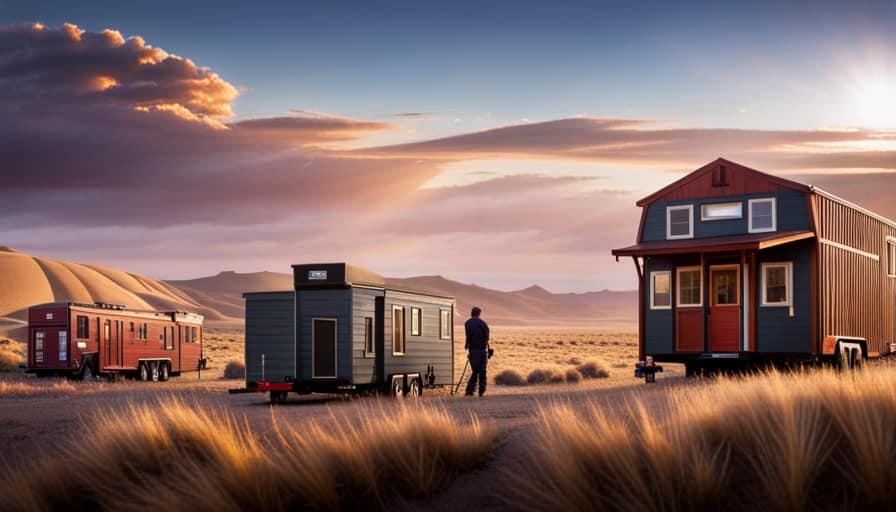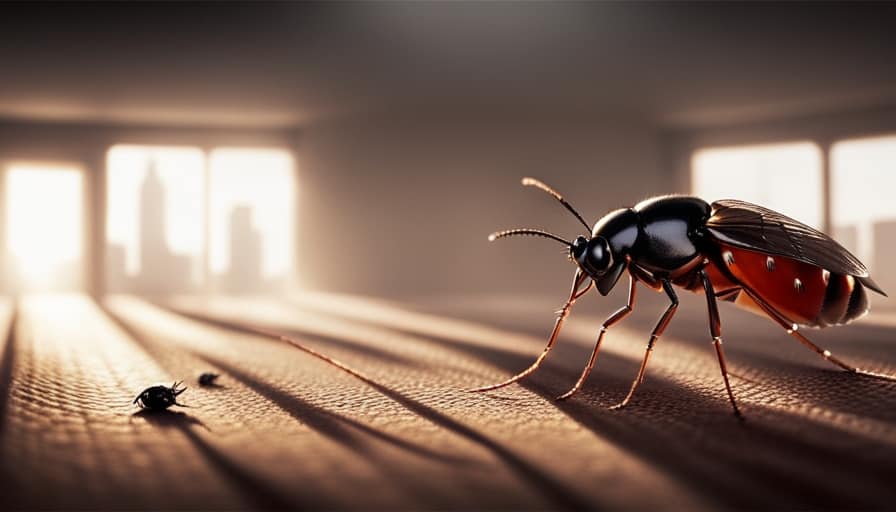Welcome to our guide on discovering the mysteries of financing for tiny houses. Come along with us as we dive into the world of financial aspects surrounding these small dwellings.
We will dive into the world of cost estimation, explore funding and loan options, and unravel the complexities of insurance considerations.
With a focus on value appreciation and investment opportunities, we aim to serve you with the knowledge and tools needed to make informed decisions in the realm of tiny house financing.
Key Takeaways
- DIY construction or hiring professionals should be considered when budgeting for a tiny house.
- Exploring alternative financing options such as crowdfunding platforms and personal loans/RV loans can help finance a tiny house project.
- Understanding insurance considerations, including assessing risks and researching specialized insurance providers, is important when owning a tiny house.
- Recognizing the increasing demand for tiny homes and the potential for value appreciation can present investment opportunities in the tiny house market.
Cost Estimation and Budgeting for Tiny Houses
Now, let’s delve into the exciting world of cost estimation and budgeting for tiny houses.
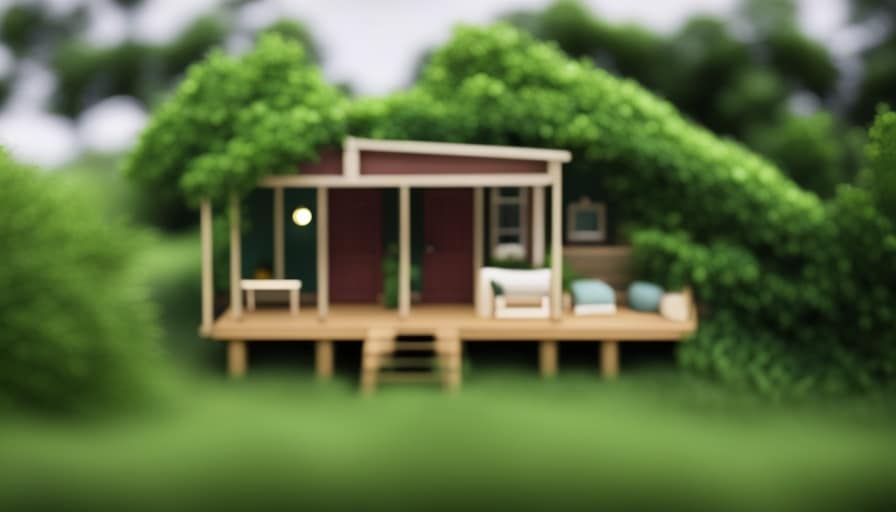
When it comes to building a tiny house, cost-saving strategies can make a significant difference in your overall budget. One of the main decisions you’ll need to make is whether to opt for DIY construction or hire professionals.
DIY construction allows you to save money on labor costs but requires a high level of skill and time commitment. On the other hand, hiring professionals ensures expertise and guarantees a higher quality build, but it comes at a higher cost.
It’s essential to weigh the pros and cons of each option based on your skill level, available time, and budget.
Ultimately, the decision between DIY and professional construction depends on your personal preferences and resources.

Exploring Funding and Loan Options
When it comes to financing a tiny house, we need to explore various funding and loan options available. One alternative financing option to consider is crowdfunding platforms. These platforms allow individuals to raise funds for their tiny house projects by reaching out to a community of supporters. Crowdfunding can be a great way to generate the necessary funds while also building a network of like-minded individuals.
Another option is to explore alternative financing options such as personal loans or RV loans. These loans may have different terms and requirements compared to traditional mortgages, so it’s important to research and compare different lenders.
Understanding the various funding and loan options available is crucial in order to make an informed decision about financing a tiny house.
Now, let’s transition into the next section, where we’ll discuss the important considerations when it comes to understanding insurance for your tiny house.

Understanding Insurance Considerations
As we delve into the topic of understanding insurance considerations for tiny houses, we must first familiarize ourselves with the various coverage options available. Insurance coverage for tiny homes is essential to protect your investment and ensure peace of mind.
When it comes to insuring your tiny house, there are a few key factors to consider. First, you need to assess the risk associated with your particular tiny house, such as its location, construction materials, and any additional features. This risk assessment will help determine the type and amount of insurance coverage you need.
It’s important to work with an insurance provider who specializes in tiny house insurance to ensure that you have the right coverage that meets your unique needs.
With this understanding of insurance considerations, let’s now explore the value appreciation of tiny homes.
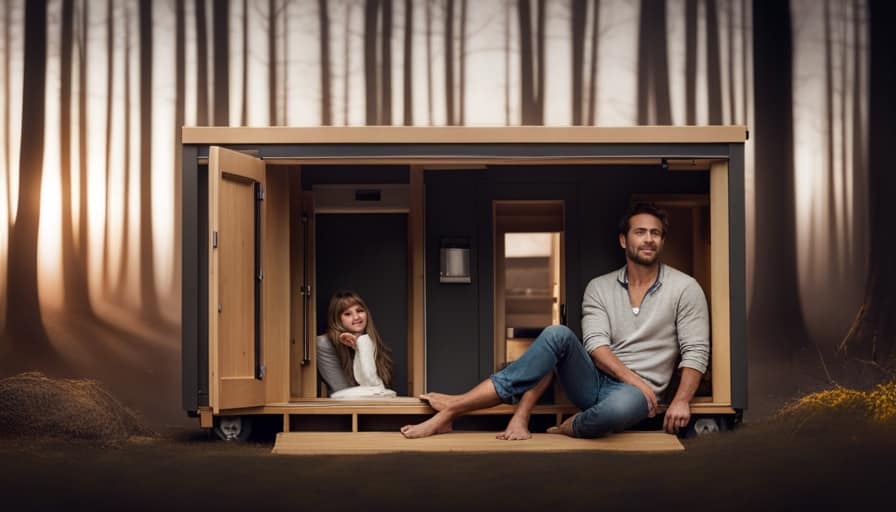
The Value Appreciation of Tiny Homes
We believe that the value appreciation of tiny homes can be a significant advantage for homeowners. As the market trends continue to show an increasing interest in minimalistic living and sustainable housing options, the demand for tiny homes has been steadily rising.
This surge in demand has led to a rise in the value of these homes, making them a promising investment opportunity. The compact size and eco-friendly features of tiny homes have become attractive to a wide range of buyers, including individuals seeking affordable housing, retirees looking to downsize, and even vacation home enthusiasts.
With the value appreciation of tiny homes on the rise, investing in these miniature abodes presents potential and opportunities for homeowners and investors alike. Now, let’s explore the prospects of investing in tiny houses and the various opportunities it offers.
Investing in Tiny Houses: Potential and Opportunities
What are the potential and opportunities for investing in tiny houses?
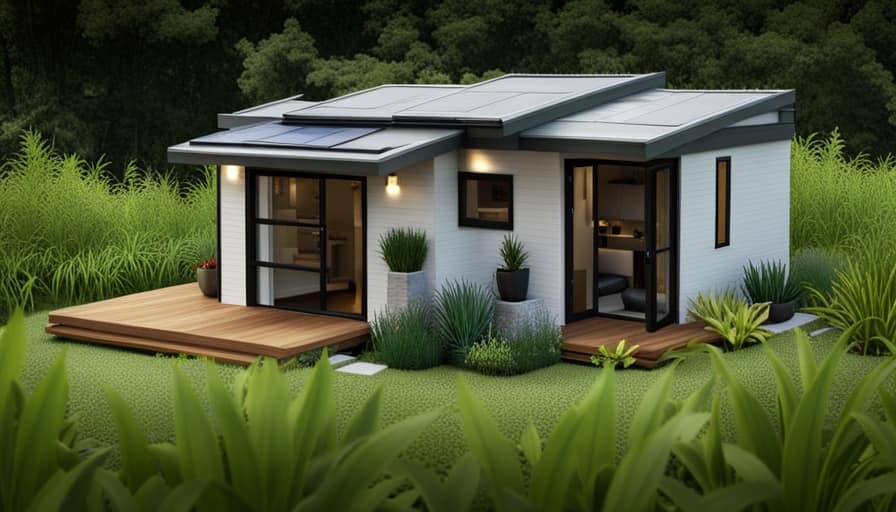
The tiny house rental market is a growing industry with immense potential for investors. As more people are embracing the minimalist lifestyle, the demand for tiny house rentals is increasing. Investing in tiny houses allows individuals to tap into this market and generate passive income.
Additionally, there are opportunities to cater to specific demographics, such as eco-conscious individuals or vacationers seeking unique experiences.
However, it’s important to consider the challenges of tiny house living. Limited space, zoning laws, and maintenance costs can pose challenges for both investors and tenants. Proper research and planning are crucial to make informed investment decisions in the tiny house market.
Frequently Asked Questions
Are There Any Government Grants or Subsidies Available for Financing a Tiny House?
Yes, there are government grants and subsidies available for financing a tiny house. These programs provide financial support to individuals looking to build or purchase a tiny house, making it more accessible and affordable.

What Are the Common Challenges in Securing a Loan for a Tiny House Compared to Traditional Home Financing?
Securing tiny house financing can be a challenge compared to traditional home loans. Differences in loan requirements, like size and mobility, can make lenders hesitant. But with research and creative solutions, we can overcome these obstacles.
Can I Use My Existing Homeowner’s Insurance Policy to Cover a Tiny House, or Do I Need a Separate Insurance Policy?
We may need a separate insurance policy for our tiny house, as our existing homeowner’s insurance policy might not provide coverage. It’s important to consult with our insurance provider to ensure our tiny house is adequately protected.
How Does the Value Appreciation of a Tiny Home Compare to That of a Traditional House?
When comparing the value appreciation of a tiny home to that of a traditional house, it’s ironic how the miniature size can yield impressive long-term investment potential.
Are There Any Tax Benefits or Incentives Associated With Investing in Tiny Houses?
There are tax benefits and incentives associated with investing in tiny houses. These can include deductions for mortgage interest, property taxes, and even potential tax credits for using sustainable materials. The investment potential is promising.
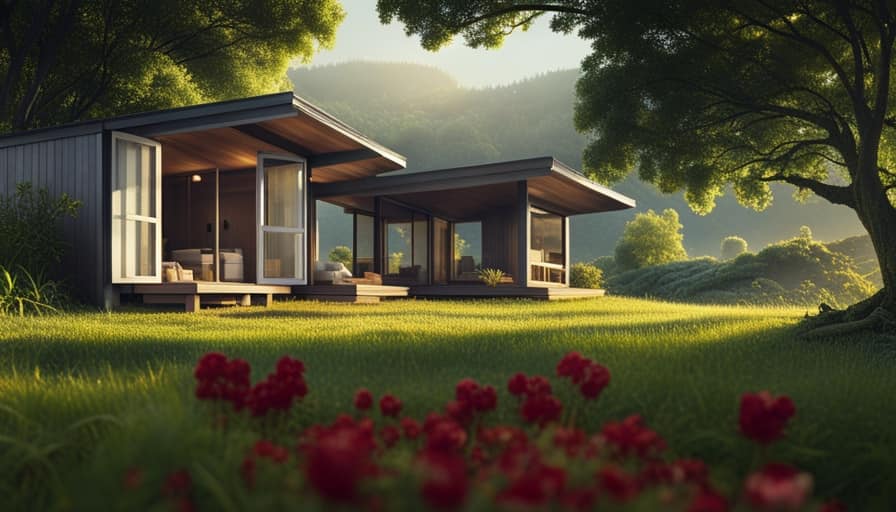
Conclusion
In conclusion, demystifying tiny house financing is essential for those looking to unlock the potential of these miniature abodes.
By understanding cost estimation, exploring funding options, and considering insurance considerations, individuals can make informed decisions about investing in tiny homes.
With the value appreciation of these unique properties and the potential for financial opportunities, it’s clear that the world of tiny house financing is ripe with potential.
So don’t delay, delve into the details and discover the possibilities of tiny house ownership today!
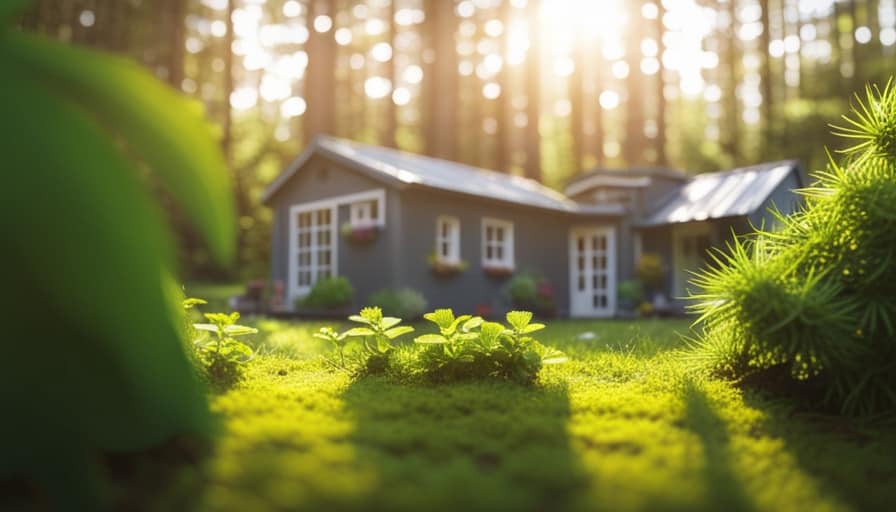
I’m Theodore, and I love tiny houses. In fact, I’m the author of Tiny House 43, a book about tiny houses that are also tree houses. I think they’re magical places where imaginations can run wild and adventures are just waiting to happen.
While tree houses are often associated with childhood, they can be the perfect adult retreat. They offer a cozy space to relax and unwind, surrounded by nature. And since they’re typically built on stilts or raised platforms, they offer stunning views that traditional homes simply can’t match.
If you’re looking for a unique and romantic getaway, a tree house tiny house might just be the perfect option.

